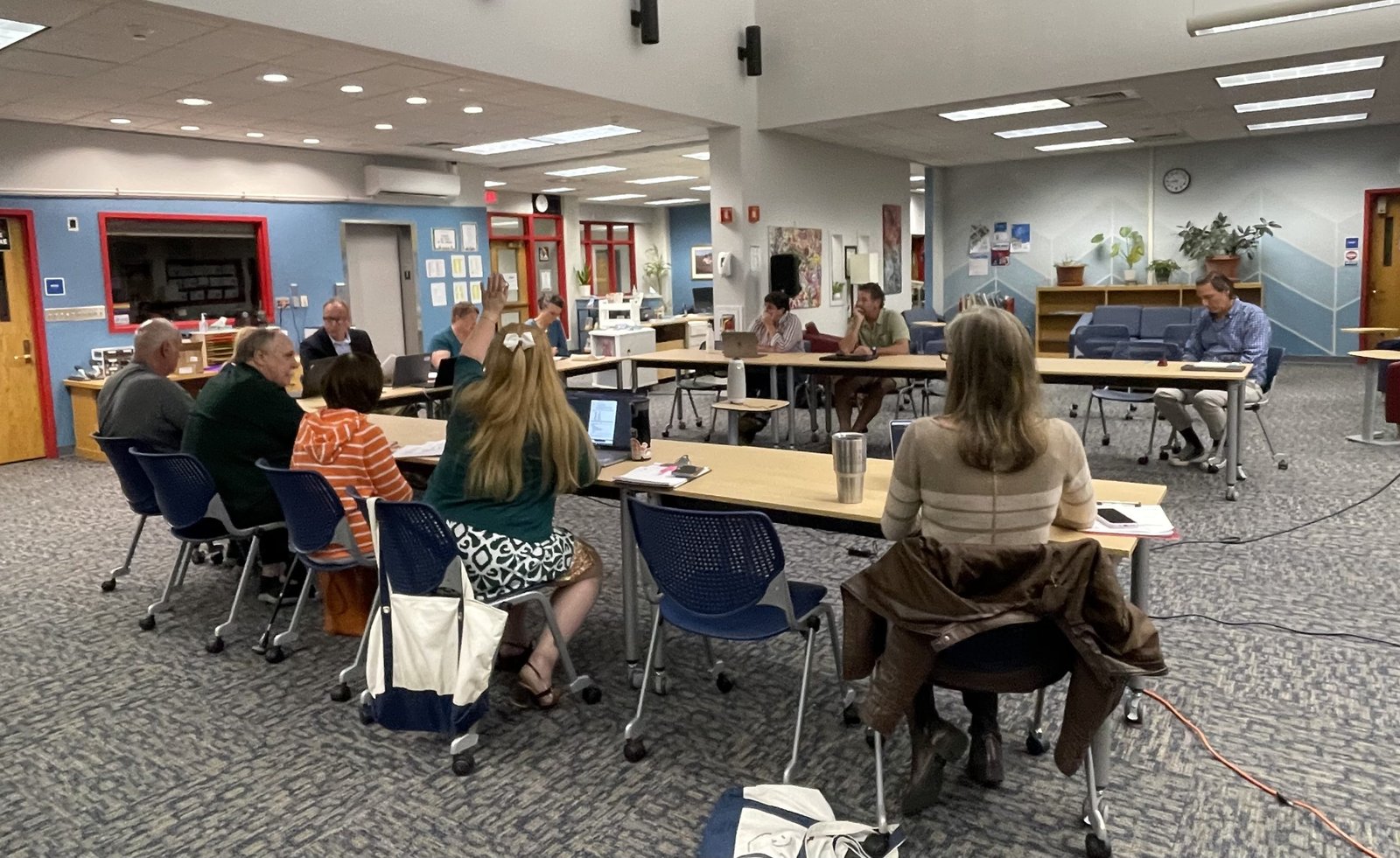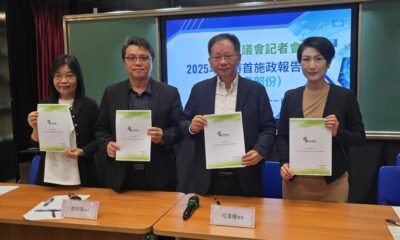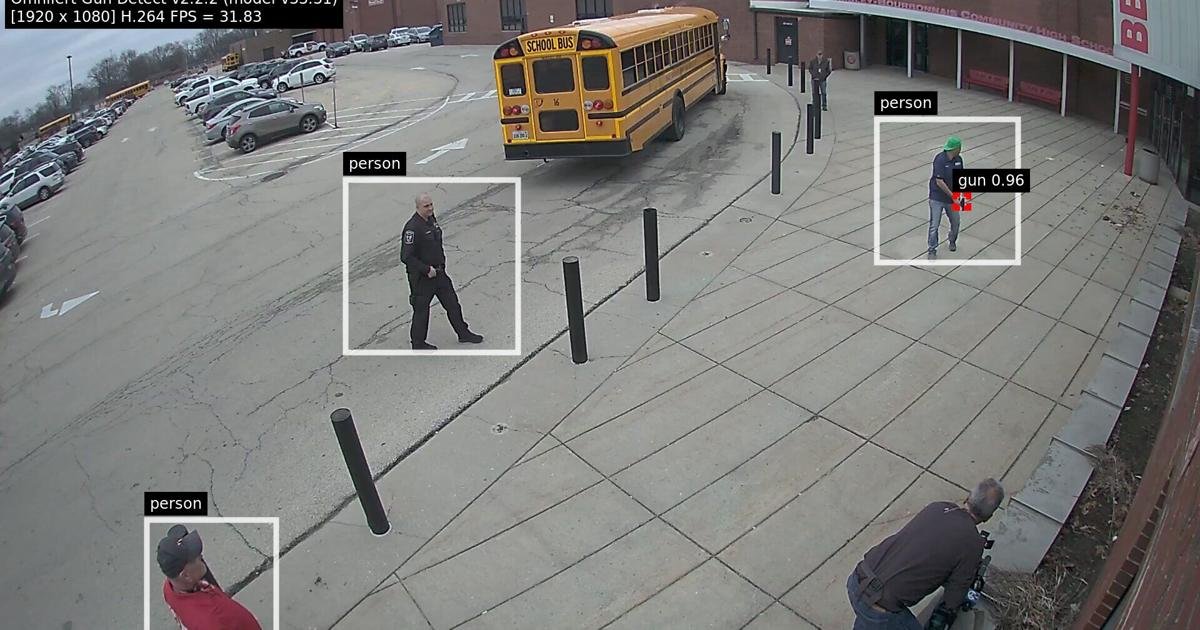Education
Frontier Regional School evolving its AI approach for the new school year

SOUTH DEERFIELD — To keep up with the tides of technology, Frontier Regional School classrooms are addressing artificial intelligence (AI) in their lessons this school year.
Before the school year started, Superintendent Darius Modestow said he encouraged teachers to address generative AI in their curriculum and syllabi, and offered guidance and recommendations to help “invite the conversation about AI” in classrooms.
Modestow said in a phone interview that the district also added to the plagiarism section of its handbook, outlining an appeals process for students accused of cheating with AI. He told the Frontier School Committee on Tuesday that the appeals process arose from a close look at lawsuits across the state involving accusations of cheating with AI.
“Having an appeals process allows us to stay academic-forward, I believe, not just punitive, and really look at the details of something if it were to come up,” Modestow told the School Committee.
In an email, Modestow wrote that teachers will also undergo training in October for addressing AI. He added that the school is currently piloting Brisk Teaching and MagicSchool, with plans to finalize the purchase by the end of September. The two platforms provide AI tools that are designed to assist teachers with daily responsibilities like creating lesson plans, quizzes and presentations as well as grading.
In a phone interview, Modestow said the technology also reveals students’ uses of AI in assignments. He added that this use can range from idea generation for a paper topic to writing and editing it with AI’s help.
Besides plagiarism, Modestow and Frontier Regional School Principal George Lanides said teachers will draw the line between using AI for shortcuts and support in their assignments. Lanides said in a phone interview that Frontier educators’ approaches range from treating AI as a tool to “a hinderance to critical thinking.”
“There are teachers on different sides of the spectrum regarding AI,” Lanides said. “As a school, we have to be mindful of that.”
With its wide popularity, Modestow stressed that enforcing a district-wide AI ban would be a disservice to students.
“It’s a tool that’s going to be available to students when they exit Frontier, and while it can lead to a lot of misuse and plagiarism … they need to understand how it’s going to affect them in the job world,” Modestow said. “The school has to have a role in helping students understand AI and how it can be used as a tool, and how it can be abused as a tool.”
He added that many students are eager to learn the correct ways to use AI.
“You’ve got to teach time and place,” Modestow continued. “If you take [AI] away, are you teaching them time and place?”
Modestow expects the district’s approach toward AI will evolve as AI evolves.
“We have to have guardrails in place here,” he said. “The road we’re going down is going to change a lot.”
Ahead of the school year, Massachusetts education officials released statewide guidance for AI, including a learning module for educators and a document titled “Massachusetts Guidance for Artificial Intelligence in K-12 Evidence.”
“The goal of this resource is not to promote or discourage the use of AI. Instead, it offers essential guidance to help educators think critically about AI — and to decide if, when, and how it might fit into their professional practice,” reads the start of the learning module.
The public guide includes recommended action steps for integrating AI into school districts using “core district commitments.” These commitments include approaching AI integration as a long-term, multi-phase process; building cross-functional and inclusive leadership teams; grounding guidance in shared understanding of AI; treating policy and practices as living documents; involving educators, families and other staff in the process; and coordinating across departments and roles prioritizing long-term equity and impact.
New positions
Lanides told the Frontier School Committee that changes this school year also entail new support staff, including a youth wellness coach who is working in the school two days a week. According to Lanides, Massachusetts General Hospital funded the new position and collaborated with the school to establish the youth wellness coach for supporting the social and emotional needs of students.
The school is also seeking a family outreach liaison, a new part-time position at Frontier that will be funded using a Public School Districts’ Opioid Recovery Trust grant.
In a phone interview, Lanides elaborated that the liaison will help “bridge the gap” between students’ families and the school, assisting parents and guardians with navigating the PowerSchool platform and other school services. He anticipates the part-time liaison will also help with attendance issues by providing a clear line of communication between families and schools.
Summer projects
During Tuesday’s School Committee meeting, Modestow also discussed several repairs that were accomplished over the summer, including a new fire alarm system. He said the $495,660 project, which included a new panel and alarms, will help ensure better fire safety. With $4,000 left, he noted that a few fixes remain, including repairs to the gymnasium’s alarms.
Other summer projects included the installation of a new LED sign outside the school, new lighting for the flagpole and auditorium, black refinishing of the auditorium and the replacement of broken alarms in the bathrooms.
Arts program donation
Lanides also told School Committee members that the school received a $5,000 donation from Arthur Neally Thompson in honor of his late wife, Margaret “Peggy” Thompson. A Frontier Class of 1962 alumna, Peggy Thompson died on July 12. The donation will fund repairs to the school’s kiln as a continuation of her passion for art and pottery.
What to Read Next
Education
ATS Breathe Easy – Lessons Learned from AI in Medical Education
Education
Seiji Isotani’s Mission to Humanize AI in Education
Newswise — As Penn GSE expands its leadership in AI and education, newly hired associate professor Seiji Isotani adds a vital perspective shaped by decades of work in Brazil, Japan, and the United States.
A pioneer in intelligent tutoring systems, Isotani develops AI tools that adapt to the needs of students and teachers—especially in under-resourced settings. But for him, technology is never the starting point.
In this Q&A, he reflects on the childhood experience that launched his career, the importance of human-centered design, and why responsible AI must begin with understanding the people it’s meant to serve.
Q: What originally drew you to the field of educational technology?
A: Working with educational technology holds special meaning for me, inspired by a personal experience. As a child, I struggled in school. I couldn’t read or work with numbers at age 7, and some even thought I had a learning disability. Fortunately, my mom, a talented public school math teacher, and my dad, a professor at the University of São Paulo, worked with me every night until I caught up. Eventually, we discovered that my difficulties were due to issues with vision, communication, and hearing.
Once those were addressed, everything changed. I went from falling behind to becoming one of the top students, especially in STEM subjects.
That transformation lit a fire in me. I wanted to help others experience that same change, and I started to help other students with their struggles during class. When I got my first computer at age 11, I was instantly in love. I taught myself to program and quickly realized that I could use this technology to help other students learn in ways that worked for them. That spark led me to educational technology, and it still fuels my work today, particularly in one of my main research areas: intelligent tutoring systems.
Q: Your work explores the use of AI to improve learning. What’s one way you think AI could genuinely help students or teachers?
A: One of the most exciting ways AI can make a difference is by acting as a true partner for teachers, helping them do what they already do well or even improve their practices, but with more insight and support. By deeply understanding teachers’ needs (as explored in my recent study) and developing AI-powered tools like those in the MathAIde project, we’ve shown that even in resource-constrained environments, teachers can receive timely, actionable feedback about their students’ learning. They can use AI to plan lessons more efficiently and get personalized suggestions for tailoring activities to each learner’s needs.
At the same time, students benefit from more engaging and personalized learning experiences, including gamified elements that adapt to their interests and help keep them motivated (as evidenced in another study of mine). It’s not about replacing teachers or increasing students’ cognitive offload. It’s about giving both teachers and students “superpowers” so they can shine and show all their might.
Q: What drew you to join the faculty at Penn GSE?
A: Honestly, I couldn’t imagine a better place to do the work I care about. Penn GSE is a powerhouse when it comes to rethinking education through innovation. I’ve admired the school’s deep commitment to investing in the field of AI in Education to create real-world impact, especially in K–12 education.
The opportunity to contribute to and grow with Penn GSE, by helping build a strong program that not only trains the next generation of AI in education leaders but also shapes the global conversation on how AI can support more accessible and meaningful learning experiences, is incredibly exciting to me!
Penn is already leading the AI in education agenda across top universities in the U.S. and around the world, and the chance to be part of that movement is truly inspiring. After meeting the faculty and students, it became crystal clear to me: this is where I want to be to help change the world. I’m especially excited to collaborate with such a passionate and visionary community made up of people who, like me, are committed to making education more human, more engaging, and more inspiring through the thoughtful and responsible development and use of AI.
Q: You’ve worked in both Brazil and the U.S.—how have those experiences shaped your perspective on education and innovation?
A: Working in Brazil and the U.S. has certainly shaped my perspective, and adding to my journey, I’ve also had the opportunity to collaborate closely with researchers and schools in other countries, such as Japan, where I completed my doctoral studies. These experiences across very different educational systems and cultures have given me the flexibility to embrace multicultural environments, understand diverse classroom contexts, and navigate the complexities of working in both low- and high-income communities.
What I’ve learned is that challenges in education are not exclusive to any one region. Whether I am working in a rural school in the Amazon, an urban district in the U.S., or a high-tech classroom in Japan, I encounter students and teachers who struggle, whether due to lack of infrastructure, insufficient support, or systems that do not fully meet their needs. These shared struggles, though expressed differently across contexts, have helped me become more connected to what really matters: understanding people and their goals. This is why a human-centered approach is at the heart of my work. For me, it’s not just about gathering data or training AI models. It’s about what we can do with AI and data to help people learn better, teach better, and feel more empowered. Designing AI in education means listening deeply to communities, co-creating solutions with them, and ensuring that the tools we develop truly serve the people they are meant to support.
Q: What’s something surprising or lesser known about your research that you enjoy sharing with others?
A: One thing that often surprises people is that I tend to avoid starting my projects by advocating for the use of AI. Even though I’m deeply involved in AI in education, I actually try to avoid introducing AI at the beginning, especially when the goal is to improve public policy through technology.
In fact, when people ask me, “How can we use AI to improve education policy?”, my first response is usually a question: “Do you already have a shared vision for the kind of education you want in your country or community? Do you have an understanding of the needs of your teachers, principals, students, and families?”
If we can’t answer those questions clearly, it’s very hard to use AI effectively, because we don’t yet know why we need AI or how it should be developed or used to actually serve the people it’s intended to help.
Thus, whether I’m working with a ministry of education or a local school, I begin by engaging deeply with people on the ground. And sometimes, AI is not the silver bullet; in fact, it often isn’t. What tends to work best is not AI alone, but a thoughtful combination of AI with practices rooted in the learning sciences and well-established educational strategies (e.g., structured pedagogy). Nothing flashy, just what works.
Q: When you’re not thinking about research, how do you like to spend your time?
A: Outside of work, my favorite role is being a dad. Spending time with my 4-year-old son and 8-year-old daughter brings me so much joy. They constantly remind me that the true wonders of the world live in small discoveries, in the curiosity to learn about everything, and in the joy of sharing what you’ve learned with those you love.
I have also practiced Judo for about 35 years. In my early days, I trained professionally for competitions and was fortunate to win state and national championships a few times. Although I had to stop training during the pandemic and haven’t returned to a dojo since, I hope to resume my practice in Philadelphia. In the meantime, I still enjoy “training” and playing Judo with my kids at home.
Finally, I also love trying new foods, exploring different cultures, and occasionally watching anime, a fun reminder of my “otaku” days back when I lived in Japan.
Q: Are you more hopeful or cautious about the role of AI in education over the next decade—and what gives you that outlook?
A: You tell me. Just kidding! I’m definitely more hopeful, but in a grounded and thoughtful way. AI is already shaping our society, and it holds incredible potential to transform education for the better, especially when it’s designed responsibly with people and for people. I’ve seen what happens when we get it right: teachers feel empowered, students feel seen and supported, and learning becomes more meaningful, engaging, and joyful.
I have a strong sense that once we move past this initial wave of hype and the overemphasis on the technology itself, we will enter a new phase. That is when the real breakthroughs in AI for education will emerge, focused on truly serving educational needs and empowering communities.
Education
Roseburg Public Schools installs AI tech for added security layer – nrtoday.com
-

 Business2 weeks ago
Business2 weeks agoThe Guardian view on Trump and the Fed: independence is no substitute for accountability | Editorial
-
Tools & Platforms1 month ago
Building Trust in Military AI Starts with Opening the Black Box – War on the Rocks
-

 Ethics & Policy2 months ago
Ethics & Policy2 months agoSDAIA Supports Saudi Arabia’s Leadership in Shaping Global AI Ethics, Policy, and Research – وكالة الأنباء السعودية
-

 Events & Conferences4 months ago
Events & Conferences4 months agoJourney to 1000 models: Scaling Instagram’s recommendation system
-

 Jobs & Careers2 months ago
Jobs & Careers2 months agoMumbai-based Perplexity Alternative Has 60k+ Users Without Funding
-

 Podcasts & Talks2 months ago
Podcasts & Talks2 months agoHappy 4th of July! 🎆 Made with Veo 3 in Gemini
-

 Education2 months ago
Education2 months agoMacron says UK and France have duty to tackle illegal migration ‘with humanity, solidarity and firmness’ – UK politics live | Politics
-

 Education2 months ago
Education2 months agoVEX Robotics launches AI-powered classroom robotics system
-

 Funding & Business2 months ago
Funding & Business2 months agoKayak and Expedia race to build AI travel agents that turn social posts into itineraries
-

 Podcasts & Talks2 months ago
Podcasts & Talks2 months agoOpenAI 🤝 @teamganassi























